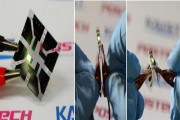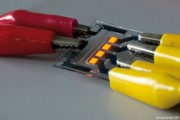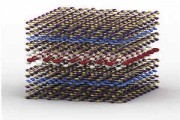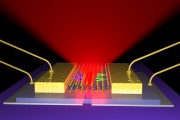2016-12-09
China’s capital Beijing has installed 28 streetlights enhanced with advanced graphene material technology in Tongzhou District, which can slash energy consumption by 20% to 30% compared to current lamps on the market, reported China Daily.
Continue reading →
 2016-06-04
2016-06-04
The arrival of a thin and lightweight computer that even rolls up like a piece of paper will not be in the far distant future. Flexible organic light-emitting diodes (OLEDs), built upon a plastic substrate, have received greater attention lately for their use in next-generation displays that can be bent or rolled while still operating.
Continue reading →
 2015-09-15
2015-09-15
The Fraunhofer Institute for Organic Electronics, Electron Beam and Plasma Technology FEP will show for the first time organic light emitting diodes (OLEDs) on graphene at Plastic Electronics 2015 (6th − 8th of October 2015, fair area Dresden, booth 1549, joint booth of OES – Organic Electronic Saxony). These OLEDs are an interim result from the project GLADIATOR funded by the European Commission.
Continue reading →
 2015-08-20
2015-08-20
As part of the Graphene Applications Innovation Centre, CPI is bringing together specialist dispersion characterization, and applications testing capability alongside a team of leading scientists with a vast array of experience in industry, research and development and technology innovation.
Continue reading →
2015-07-29
A research team from Beijing Tsing Hua University has made a groundbreaking graphene LED that is capable of color tuning to most colors under the visible spectrum, according to a Phys.org report.
Continue reading →
 2015-03-30
2015-03-30
A Canadian-financed company, Graphene Lighting, has succeeded in commercializing graphene LED light bulbs, and will be launching the lights on the market sometime later this year, reported BBC.
Continue reading →
 2015-02-04
2015-02-04
The team, led by Nobel Laureate Sir Kostya Novoselov, made the breakthrough by creating LEDs which were engineered on an atomic level.The new research shows that graphene and related 2D materials could be utilised to create light emitting devices for the next-generation of mobile phones, tablets and televisions to make them incredibly thin, flexible, durable and even semi-transparent.
Continue reading →
 2014-03-13
2014-03-13
Most modern electronics, from flat-screen TVs and smartphones to wearable technologies and computer monitors, use tiny light-emitting diodes, or LEDs. These LEDs are based off of semiconductors that emit light with the movement of electrons. As devices get smaller and faster, there is more demand for such semiconductors that are tinier, stronger and more energy efficient.
Continue reading →
 2016-06-04
2016-06-04
 2015-09-15
2015-09-15
 2015-08-20
2015-08-20
 2015-03-30
2015-03-30
 2015-02-04
2015-02-04
 2014-03-13
2014-03-13